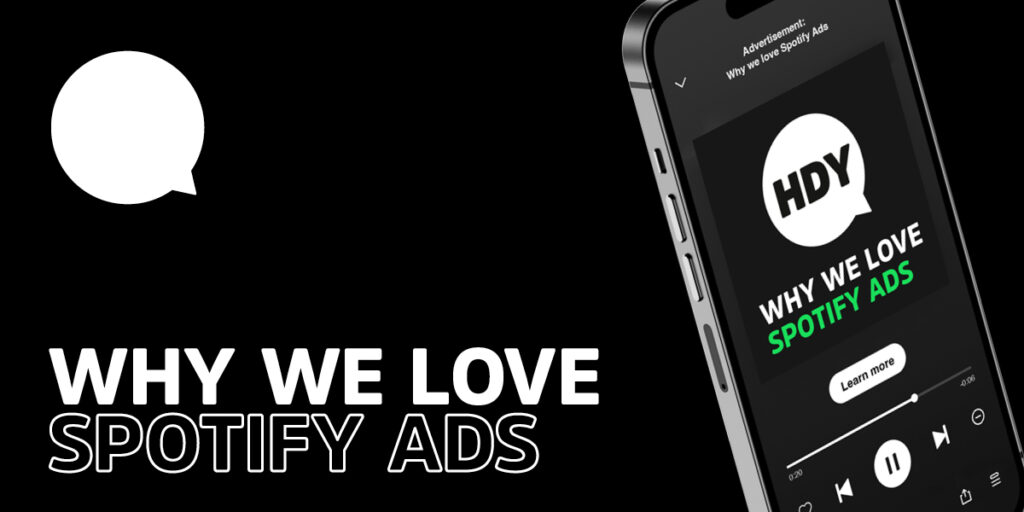Why We Love Spotify Ads
18th January 2023
Spotify is one of the largest audio platforms in the world with 456M active users worldwide. Being able to advertise on the platform to reach new customers and build brand awareness should be your goal in 2023.
So, why should businesses consider incorporating Spotify ads into their marketing plan?

1. Targeted and personalised advertising
One of the top advantages of Spotify ads is targeting specific audiences based on their listening habits and demographics. Allowing businesses to tailor their ads to reach the most relevant and interested consumers.
For example, if your business sells fitness products, it could target users who regularly listen to workout playlists or fitness podcasts. This ensures that the ad is being served to an audience which is already interested in the product category and is more likely to engage with the ad.
Additionally, Spotify offers personalised ad experiences through its “Ad Studio” tool. This allows businesses to create custom ads that are tailored to the individual user based on their listening habits and preferences. This level of personalisation can lead to higher engagement and conversions.
2. Engaging and immersive advertising experience on Spotify
One of the biggest challenges with digital advertising is the tendency for consumers to tune out or ignore ads. However, the unique nature of Spotify ads allows for a more engaging and immersive experience.
Unlike traditional digital ads that interrupt a user’s browsing or scrolling experience, Spotify ads are seamlessly integrated into the user’s listening experience. This means that the ad is presented in a way that doesn’t disrupt the user’s flow and can be listened to while they are actively engaged with the platform.
If you have a solid understanding of your audience and when they are likely listening to music (e.g driving to work, cooking or working out), a well-crafted ad will land better than a carousel ad they may scroll past on Instagram, Facebook or Twitter.
3. Measurable and trackable results
As with any marketing strategy, it’s important to be able to track and measure the effectiveness of the campaign. Spotify offers robust analytics and reporting tools that allow businesses to track the performance of their ads in real-time.
This includes metrics such as ad impressions, engagement, and conversions. This allows businesses to track their return on investment and make adjustments to their campaign as needed.
One key stat you may see when researching Spotify ads is ad completion rate, meaning ‘The percentage of ads within the ad set served that was played to the end’. With a higher ad completion rate you can expect listens to have digested more of the message in your ad, but with a lower percentage you want to have an understanding of where users are dropping off. This level of insight is vital to ensuring your messaging is landing with your audience to gain a deeper understanding of your target audience. This can help businesses fine-tune their targeting and create more effective ads.
In conclusion, incorporating Spotify ads into a multi-channel marketing plan can provide numerous benefits for businesses. The ability to target and personalise ads, create engaging and immersive experiences, and track and measure results can all lead to a successful marketing campaign.
Here at HDY, we have used Spotify ads for a range of clients. One of our favourite campaigns was in collaboration with Cheltenham Jazz Festival in which we created a digital campaign to drive pre-registrations for the event. The Spotify ads we created had a listen-through rate of 96% showing that listeners stayed engaged during the ad instead of skipping to the next song.
Click here to read the full case study here
If you would like to speak with our digital experts about crafting your next multi-channel marketing campaign, contact us.

